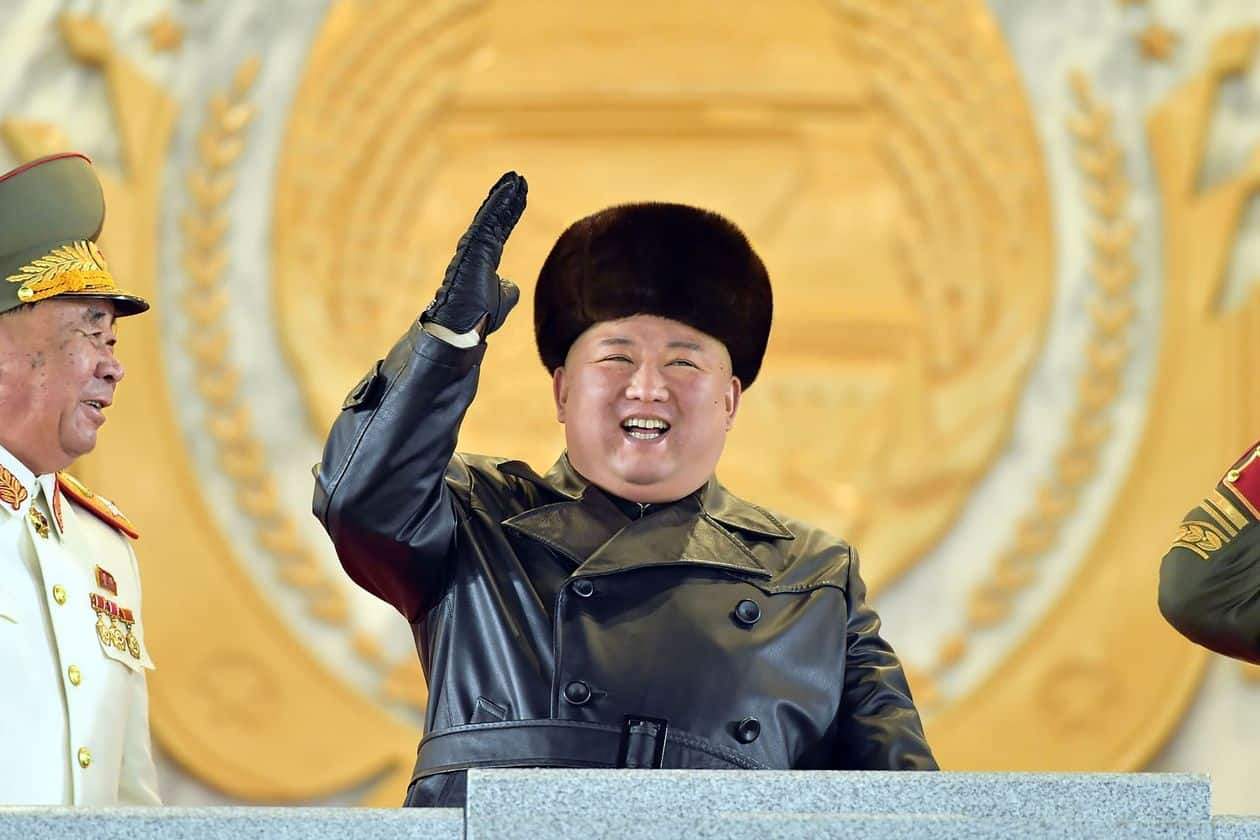Kim Jong Un Offers a Rare Sneak Peek at North Korea’s Weapons Program

North Korea has long kept its adversaries on their toes with taunting rhetoric and surprise weapons tests.
As President-elect Joe Biden prepares to take office, leader Kim Jong Un offered a sneak peek of Pyongyang’s pipeline of military hardware with unusual detail during a rare Workers’ Party Congress meeting that ended this week.
The North is developing military drones, a nuclear-powered submarine and surveillance satellites, Mr. Kim said. Missiles will get smaller and lighter. Others will fly farther.
A hypersonic warhead, which generally can travel a mile per second, is ready for testing and production, he said. The guidance technology for a multi-warhead rocket, presumed to be for an intercontinental ballistic missile, is at its final stage.
At a Thursday night military parade celebrating the Workers’ Party meeting, the North put a host of military hardware on display, including a submarine-launched ballistic missile that state media touted as the “world’s most powerful weapon.”
Mr. Kim’s speech highlighting the North’s weaponry sent a not-so-subtle message to the U.S. about Pyongyang’s potential military advances if nothing changes in negotiations with Washington. But Mr. Kim didn’t issue any imminent threats about a weapon launch, a sign he might be trying to keep the door open to talks.
In his Jan. 8 speech, Mr. Kim said he doubted that the American approach to talks would change under new leadership and any engagement would be conditioned on Washington dropping its hostile policy toward the country.
An early barometer will come this spring when the U.S. and South Korea could once again hold large-scale military drills that were canceled after President Trump questioned the value of such allied maneuvers, calling them war games and expensive. North Korea has long detested the drills.
If the exercises occur, the North will take it as a sign that Mr. Biden’s stance won’t be different from those of prior U.S. administrations, said Go Myung-hyun, a research fellow at the Asan Institute for Policy Studies, a Seoul-based think tank.
“We’re going to see more fireworks for sure this year,” Mr. Go said. “The real question is when.”
Any indication that Mr. Kim is willing to start a new relationship with the Biden administration should be viewed skeptically, given Pyongyang’s record of breaking from prior nuclear deals, according to a Tuesday report by the Foundation for Defense of Democracies, a Washington think tank. The report’s co-authors, David Maxwell and Mathew Ha, called for the U.S. to ramp up sanctions enforcement, while repairing ties and continuing joint military drills with South Korea.
“Throughout its history, the Kim family regime has exploited dialogue with the U.S. and South Korea solely to gain economic and political benefits without ever providing anything in return,” according to the report. “The Biden administration must not surrender to Kim’s demands.”
In recent years, the Kim regime wasn’t so precise when talking about its future military plans. After the abrupt breakdown at 2019’s Vietnam summit with President Trump, Mr. Kim warned the U.S. could face a “gloomy and very dangerous outcome” if talks remained at a standstill. Later, the North warned it might give the U.S. a Christmas gift. Nothing happened.
About a year ago, Mr. Kim promised a new strategic weapon that didn’t materialize until an October military parade revealed a mammoth-sized ICBM.
Pyongyang has been on relatively good behavior, having held off on nuclear tests and ICBM launches for more than three years. The Kim regime was waiting to see if Mr. Trump, whom Mr. Kim met three times, would win re-election and deliver on his promise to quickly broker a denuclearization deal during his second term.
North Korea has a pattern of unleashing provocations not long after a new president takes office or after an incumbent wins a second term. For President Obama, the Kim regime conducted two weapons tests in the first four months of his first term. In his second term, a weapons test came within the first two weeks. The North test-fired a ballistic missile just three weeks after Mr. Trump’s inauguration four years ago.
North Korea hasn’t acknowledged Mr. Biden’s victory. In a speech last week, Mr. Kim called the U.S. his country’s biggest enemy.
“Pyongyang is signaling that denuclearization is not on the cards and that it will continue to develop its nuclear program as long as there is no agreement with Washington to halt it,” said Ramon Pacheco Pardo, KF-VUB Korea chair at the Institute for European Studies in Brussels.
The Workers’ Party Congress meeting, just the third such event in more than four decades, was organized to outline the country’s next five-year economic plan. But Mr. Kim gave few details on the turnaround strategy during the eight-day gathering.
The details on weapons might be partially an attempt to grab focus away from the country’s economic woes. During the pandemic, North Korea sealed itself off from the outside world, letting border trade with China and foreign travel plummet and leading to what was likely the worst economic slide in a generation last year.
Talking about weapons “gives some successes to report, offsetting the dreariness of the economic discussion,” said Joshua Pollack, a Washington-based senior research associate at the Middlebury Institute of International Studies. “It’s the only source of prestige or leverage that he has.”
Photo: Kim Jong Un waves during a military parade in Pyongyang earlier this month. -AGENCE FRANCE-PRESSE/GETTY IMAGES
Link: Kim Jong Un Offers a Rare Sneak Peek at North Korea’s Weapons Program - WSJ











